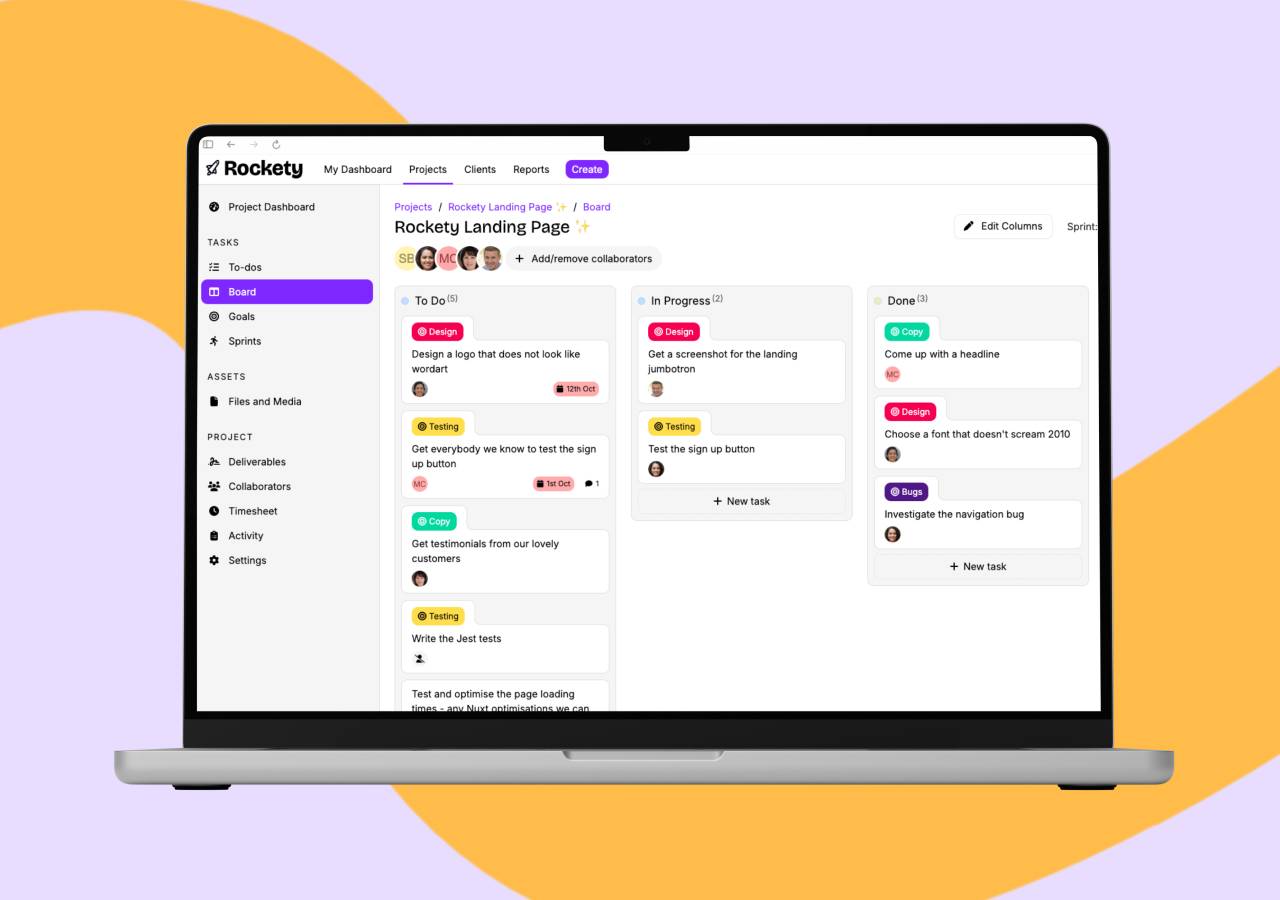Rockety offers two powerful ways to organize and track your tasks: Sprints and Goals. While they may seem similar at first glance, each serves a distinct purpose in project management. Here’s a quick guide to help you understand the difference and how to use them effectively.
What Are Sprints?
Sprints are time-boxed periods during which your team focuses on completing a set of tasks. They are typically used in agile methodologies like Scrum and are all about achieving short-term, actionable objectives. The primary purpose of sprints is to drive progress within a specific timeframe, ensuring that your team remains focused and delivers incremental results.
In Rockety, creating a sprint is simple. Navigate to the project, click on "Sprints," and select "Add New Sprint." Once you’ve created a sprint, you can assign tasks to it and track their completion. Each task can belong to only one sprint, and you can have only one sprint active at any given time. This structure helps your team concentrate on current priorities and execute work efficiently within the defined sprint period.
What Are Goals?
Goals represent milestones or broader objectives, providing a flexible way to group tasks based on a shared outcome. For example, you might create a goal to complete a new feature or to launch a specific campaign. Goals are not time-bound, which makes them ideal for organizing work around long-term achievements or thematic deliverables.
To create a goal in Rockety, go to the project, click on "Goals," and select "Add New Goal." Once created, you can assign tasks to the goal to group them under a common milestone. Each task can belong to one goal, and unlike sprints, you can have multiple goals active at the same time. This flexibility allows teams to track progress toward larger objectives without the constraints of timeboxing.
How Sprints and Goals Work Together
Tasks in Rockety can belong to both a sprint and a goal, enabling you to align short-term efforts with long-term plans. For instance, you might assign a task to a two-week sprint aimed at resolving high-priority bugs while also associating it with a goal like “Feature A” to reflect its contribution to a broader milestone.
By combining sprints and goals, your team can ensure that day-to-day work aligns with strategic objectives. This approach maintains focus on immediate priorities while simultaneously tracking progress toward overarching deliverables.
Sprints and Goals in Rockety
Sprints and goals are complementary tools designed to enhance your team’s productivity. Sprints keep your team on track with immediate objectives by providing clear deadlines and focused execution. Goals, on the other hand, offer a higher-level view of your progress toward milestones, allowing you to organize work around shared outcomes.
By using sprints and goals together in Rockety, you can strike a balance between short-term execution and long-term planning, ensuring your projects stay on course and your vision becomes a reality.

Looking for a new project management solution?
Rockety is a modern, easy-to-use project management tool that helps you get your projects done faster. Click here to get started!